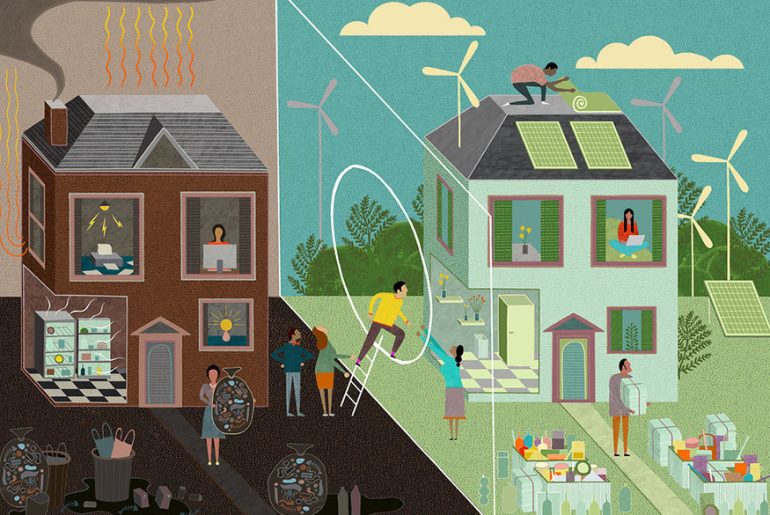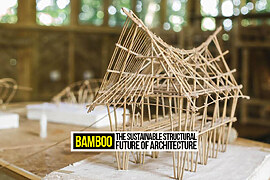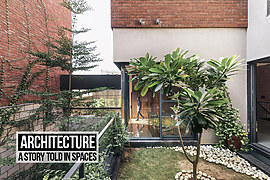The construction industry alone stands responsible for more than 50% of greenhouse emissions which thereby have proven to lead to rising temperatures, rising sea levels, floods, droughts, and spread of infectious diseases among many others. Our buildings consume more than 35% of all generated energy and a not-so-surprising 60% of the electricity that is generated. A building’s carbon footprint refers to all the carbon released into the atmosphere during the design, construction, and operation of the project. Several protocols like the Kyoto protocol stress on reducing greenhouse emissions but there is no regulation or rule that binds the construction industry to follow these. This is where architects around the world need to come together to change the way we design, construct and operate our buildings. This also calls for a thoughtful and sensitive thought process undertaken at every design stage to keep it sustainable. Understanding the three rings of sustainability might help us to position architecture within the equation.
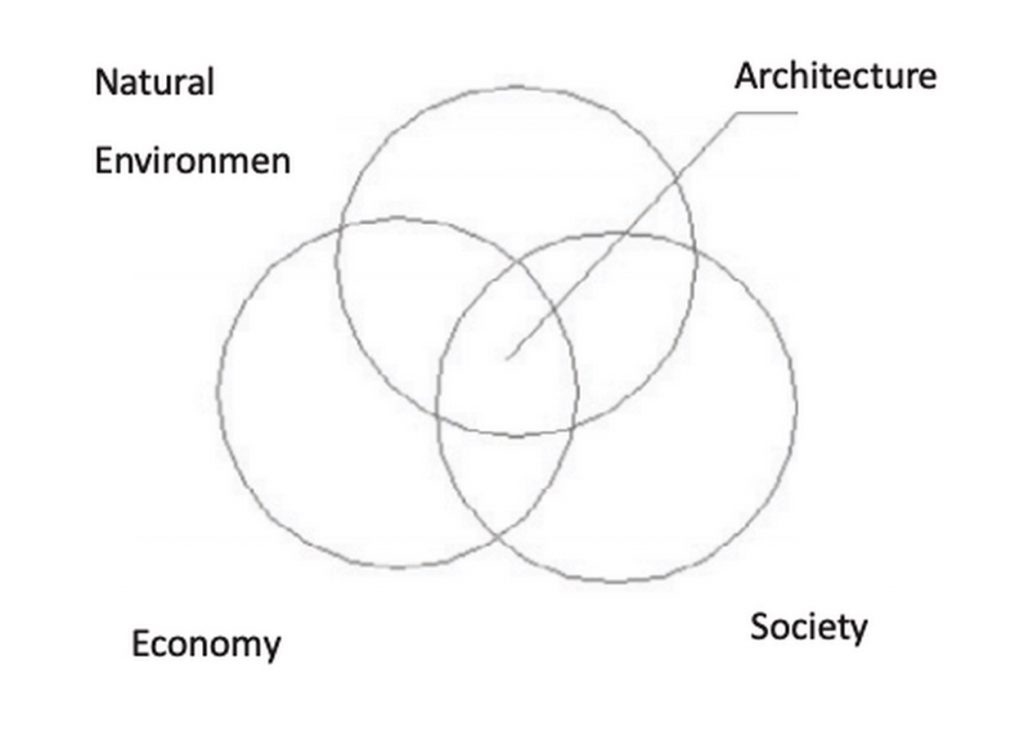
Source_Paper on Sustainable design for low carbon architecture by Weihong Li
Let us take a look at 10 pointers that could bring us to our sustainability goal and leave less of a carbon footprint.
1. Planning before plans
Early planning can eliminate resource wastage even before the plans are put to paper. Several layout options can be assessed for life cycle and operational costs thereby allowing you to arrive at the greenest option. This would also include inventory data detailing which would thereby help you direct the entire process point by point without leaving much of a burden on the earth.
2. HVAC – Passive and efficient systems to the rescue
More than 40% of the greenhouse contribution has to be from this very important factor. While several architects have already made it a point to cut down on HVAC costs through the integration of passive cooling and heating techniques, technology has stepped up the game by introducing smart systems and sensors. The initial investment might seem high but the output and the performance will leave you with a different opinion
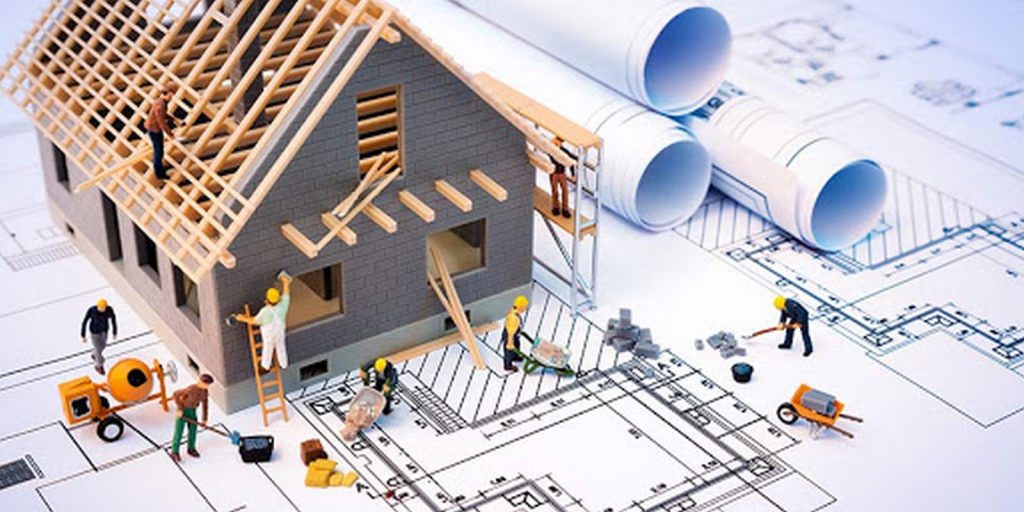
3. Lighting – Paving way for daylighting
Lighting has been an integral element since our lifestyles have more of night schedules compared to the earlier times. Solar lighting and integration of smart lights, LEDs and efficient use of daylighting have shown to improve the electricity bills and therefore check the Low Carbon footprint list. Daylighting also takes into account the opening panes and factors like double glazing, U-factor, solar heat gain co-efficient and condensation resistance.

4. Integrating Renewable resources
Solar panels, Water recycling systems, Bioenergy, and efficient waste management systems can be named as a few of the renewable options that can be integrated into the project to ensure that we cut down on the bills.
5. Wall and Wall systems – Let the walls show all they got
Walls can be more than just decorative. A wide range of wall thicknesses, custom curtain wall, double glazing, cavity wall, Trombe wall, and their combination can help you save energy and on bills by a huge factor. Next time you are designing, check out how your walls could be more than mere partitions.
6. Material Selection – Let the material do the saving
Materials used for a project can help you navigate among cost reduction, premiere finish, and sustainability. Materials with less embodied energy which means materials that consume less energy to be processed and made into a usable form and easily transported should be given the upper hand. This also includes the fixtures that you are going to assign in your project. With technological advancements being made every day, there is an array of options to choose from which are both pocket friendly as well as environment friendly. Using locally sourced materials can also help you save on transportation costs and acquiring the labour to work on that material would be easy.
7. Reusing and Recycling – Let’s add stars to that LEED chart
Reusing rubble from a previous site or using resources available from the same site could make a big difference to the environment. You would be surprised to know the number of a building that is torn down or abandoned long before they reach their expiry tags. This is where adaptive reuse steps in. Adaptive reuse has been a trending design approach in recent years with several big names in architecture proving how challenging adaptive reuse can be than designing from scratch.
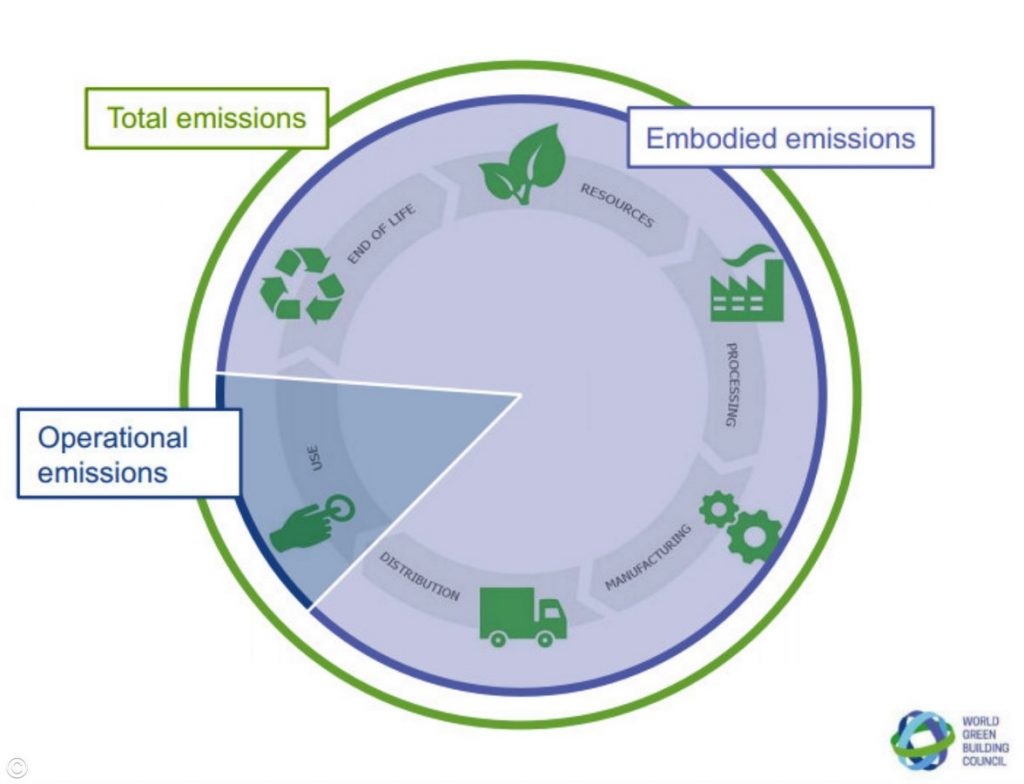
8. Water as a precious resource
Water scarcity has hit us real hard. The curing and cement mixing stages are a few to name where water is needed the most. Recycling water and using pre-mixed cement can be some steps undertaken during the construction phase. Rainwater harvesting systems and making the most of roof runoff are some steps that can be undertaken once the building is operational.

9. Location – Vernacular = Sustainable
Every site is different and no two sites can have the same design. Vernacular architecture and building tactics passed on from our ancestors are a good point to start with to understand the location better. From local materials that respond to the climate to the elements that perform well in the region; no lesson is small learned from vernacular architecture.
10. Landscaping – The right choices to make
The landscape is a term that is lavishly used for every green patch set up in the site. With time some of them have forgotten that landscape is an art and not just planting nay random trees or lawns. Lawns are known to be high maintenance and consume a lot of water. Foreign varieties of plants and trees tend to wither soon and may not adapt to your site. The choice of trees and plants for your site entirely depends on the site location. Their nature, however, can depend on your needs. For example, Cana Lilly variant is an excellent plant known to filter greywater. Several trees provide ample shade with less litter while some are purely ornamental. The choice is yours to make.
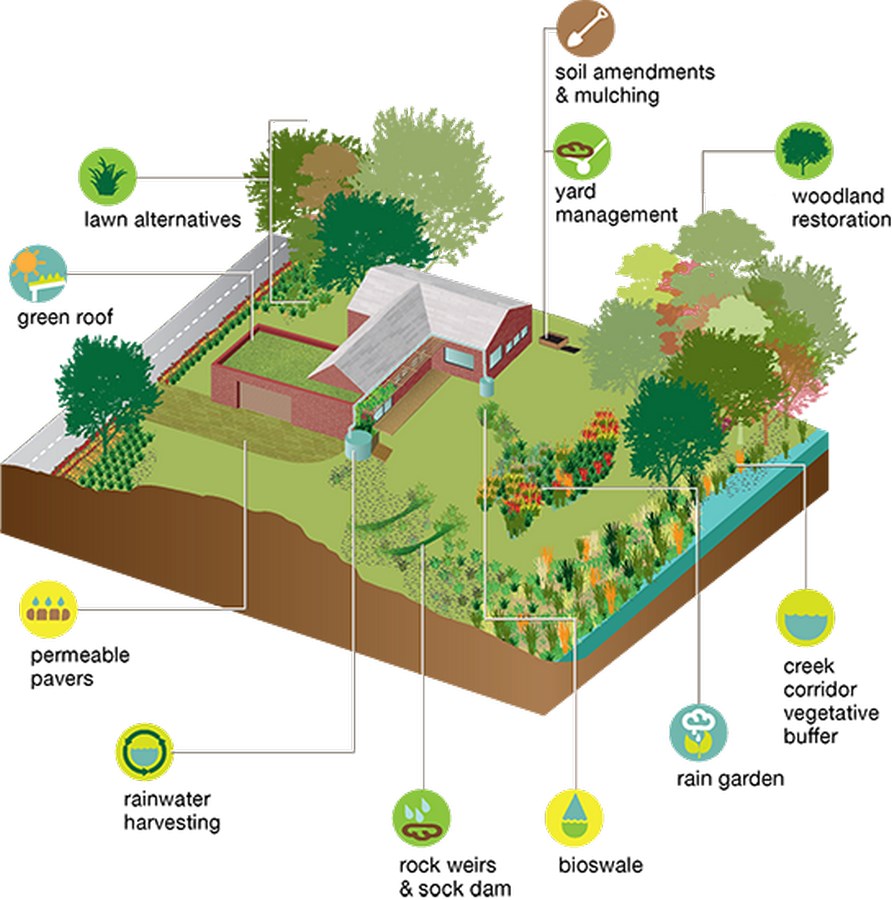
Let’s keep these 10 pointers in mind next time we pick up the pencil to design. After all the harmonic dynamics is what will keep us going in the long run.


